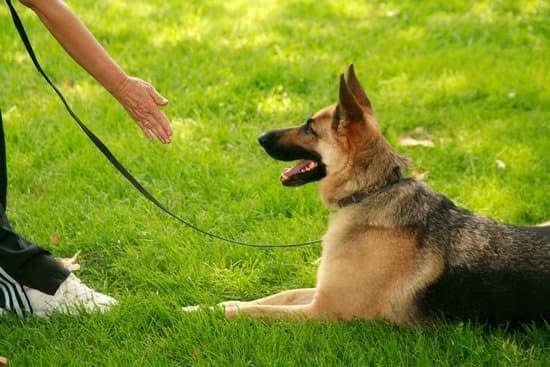Introduction
Barking is normal behavior for dogs. It’s an important way for them to communicate with the outside world, either as a warning, to alert their presence, or just out of exuberance. Nevertheless, excessive barking can be a nuisance and make life much more difficult for pet owners. Training a dog to stop barking is important for not only managing behavior issues but also improving the overall relationship between people and their pets.
When taught under the right conditions and with patience from their owners, dogs can learn how to control excessive barking quickly and successfully. The goal is not to completely stop all forms of barking; rather, it’s to teach the pet when it’s appropriate or necessary to bark and when they must remain quiet. By instructing in this manner, positive reinforcement training in particular can help canine companions better recognize basic commands as well as socialize with other animals without interruption.
In addition to helping people avoid neighborhood complaints about loud disruptive barking, teaching dogs proper etiquette for being around others helps boost confidence within both parties involved. With gentle guidance from owners on when it’s suitable to vocalize one’s emotions and when that behavior should be put aside, most dogs will learn how to channel their inner thoughts constructively in just a few weeks or months. That said, it is important that owners exercise caution while training their dog’s non-bark behavior because overly strict instructions might cause greater distress – or worse – lead them back into destructive tendencies such as aggressive growling or biting during playtime scenarios
Comprehending Barking Behaviour
Barking is one of the most common forms of communication among dogs, and it comes in several different forms that can be largely determined by the context. It is important to first understand why dogs bark in order to properly train them to stop battling barking.
There are several different reasons why dogs bark, such as alerting their owners to something (like a disturbance) or out of boredom or loneliness. Dogs also use barking as a form of communication with humans and other animals, as well as for self-expression and/or territory marking. A typical example of this is when dogs bark when someone rings the doorbell.
It is critical to identify the triggers that prompt excessive barking from your dog. For instance, if your pet starts barking excessively any time visitors enter your home, you need to note this behavior. You should watch your dog carefully whenever people visit your home in order to better understand their specific triggers for barking and identify patterns within their behaviour.
There are some common signs associated with excessive barking which can give an indication that your pet needs help controlling this kind of behaviour. These signs include: rapid mouth movements (often triggered by anticipation), bouncing up and down on all fours while attempting to gain attention, standing tall while making noises and constantly vocalizing in general even when there is no apparent trigger or purpose behind it. Additionally, if your dog begins pacing around a lot and is continuously distracted by different noises or new visitors, these could also be signs that they need help controlling excessive barking.
Counteracting Barking
Dogs will often bark as a form of communication or to alert their owners that something is amiss. Unfortunately, this behavior can quickly escalate into excessive or even uncontrollable barking, particularly in puppies. In order to get your dog to stop battling barking and reduce unpleasant noise levels around your home, there are a few tried-and-true tactics you can employ that have been tested and proven to work.
One effective practice for curbing excessive barking is teaching your pup the silent command. This learned cue requires you to teach your dog that silence results in rewards such as treats or affectionate attention. Each time your pup barks, firmly say “no” and follow with the silent command phrase; give him an immediate reward when he stops barking. Be sure to repeat this exercise consistently to help him understand when barkings should not occur so you can eventually give the silent command alone without having to reprimand him each time with an additional “no” beforehand.
Another actionable item for curbing barking bouts is exercising before potentially stressful triggers arise. A walk outside or a session of playtime before guests come over can help ensure that your pup has met some of his needs beforehand and may curb any potential vocal outbursts when surrounded by potential stressors such as visitors entering his house or unfamiliar animals passing by during walks.
Finally, understanding what your dog’s triggers are is vital in helping curtail the amount he barks unnecessarily throughout the day. Is it birds chirping? Cats meowing? People coming into the home? Dogs barking? If you’re able to identify specifically what sparks these spurts of barking activity and address them accordingly — like removing him from heading directly up against glass doors when trying look at cats outside — then you’ll be well on your way towards reducing any unnecessary outbursting all together.
Conditioning & Rewards
Training a dog to stop barking can be difficult, since rewards and punishments can affect many different behaviors all at once. One of the most effective ways to train a dog to stop excessive barking is through positive reinforcement and reward-based training methods. By rewarding your dog for not barking, you can condition them to recognize that silence will bring them treats, petting or play time.
When setting up a reward system for your dog, it is important to keep things consistent. Choose one specific action or behavior that will result in the desired reward and make sure the dog always receives that same treat response when they comply with the commands given. For example, if you have asked them to remain quiet for 30 seconds and they comply, then each time this happens give them the same verbal praise or pat on the head as a reward. If possible also provide a small food treat such as a tiny piece of cooked chicken or cheese cubes. Make sure not to vary what type of reward you are providing or timing intervals between rewards – consistency is key!
In addition to providing rewards when your dog follows commands correctly, it’s important that they understand that excessive barking is not rewarded at all. Whenever they bark beyond acceptable levels remove any treats or attention immediately and ignore their attempts at getting responses such as whining or barking louder. You should never shout at your pet or physically punish them as this can actually contribute to more aggressive behavior in the long run. Instead stick with quiet yet firm no’s and redirect their attention toward better alternatives rather than yelling at them every time they become vocal.
Consistency & Discipline
Consistency and discipline are two important components of successful dog training. Consistency means setting clear rules and guidelines for the dog to follow, such as when to bark and when not to bark. It is important that the owner reinforces these guidelines through repetition and consistency in order to help the dog understand which behavior is desired and which is unacceptable. Discipline involves rewarding good behavior and correcting bad or inappropriate behavior. It does not have to be violent or mean; instead, it can take the form of verbal corrections or rewards when your dog follows a command or during that you reward with treats for your dog’s compliant behavior.
It is also important to provide your pup with lots of positive reinforcement while they are learning new behaviors, so that they understand what they should do rather than focusing on punishments. This way you get the best results in the shortest time possible and make sure the training sticks with your pup going forward, rather than forgetting after a few hours
Troubleshooting & Common Problems
Often when training a dog to stop barking, it can feel like an uphill battle. To help combat this, ensure that you are setting expectations for your pooch in regards to barking. It can often help to give a command such as ‘quiet’ when your dog begins barking. This will help them understand that the action of barking is undesirable and should be avoided.
Along with giving commands, some common strategies to reduce excessive barking include providing plenty of exercise, finding calming activities such as massage or playing with toys, and making sure they receive plenty of attention from the family. Another strategy that may be useful is desensitization – gradually increasing exposure to the triggers (whatever causes them to begin barking) so that their response decreases over time. Be sure to reward your pup each time they successfully manage not to bark so they get positive reinforcement for their behavior!
If you’re still struggling after trying out these steps, other options might include considering medication to address any underlying anxieties or working with a qualified animal behavior specialist who may have additional tricks up their sleeve. Remember it’s normal for dogs to bark occasionally but if it becomes problematic then training could be useful in reducing how often they do it! Good luck!
Aftercare
Once the initial training is complete and a dog has learned to stop barking, there are still a number of things that you can do in order to reinforce their new behavior. First of all, regular positive reinforcement (treats, verbal praise) is important whenever they stay quiet. Secondly, try to ensure that they’re getting plenty of exercise so they may direct their energy into activities other than barking. Thirdly, whenever possible, avoid reinforcing negative behaviors. That could be anything from a swift yank on the leash as punishment for barking too much, to feeding them too close to bedtime when their energy levels are high. It is important for owners to find other ways of showing disapproval such as use of verbal cues or redirecting them toward another activity if inappropriate barking occurs. Finally, create an environment in which your dog feels safe and secure so that any potential triggers for barking are minimized. Try providing them with chew toys even when you leave home; this will give them something productive to do instead of obsessively barking out windows or at passers-by. Following these steps should ensure that your pup continues its progress towards having a more peaceful household presence.

Welcome to the blog! I am a professional dog trainer and have been working with dogs for many years. In this blog, I will be discussing various topics related to dog training, including tips, tricks, and advice. I hope you find this information helpful and informative. Thanks for reading!





